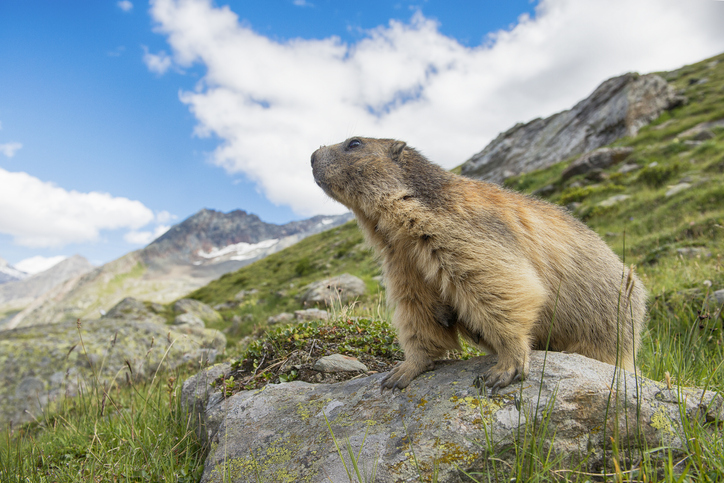We may earn revenue from the products available on this page and participate in affiliate programs. Learn More ›
When it comes to the mash-up of mammals and meteorology, we’ve come a long way. Before Punxsutawney Phil was even a glimmer in our collective eye, folks in Europe relied variously on bears, badgers, and hedgehogs to tell them if it was still sweater weather.
Turns out, however, that there’s much more to the history of Groundhog Day and to these furry forecasters than just their prognosticating prowess—or lack thereof, as the case may be. Underneath the pomp and circumstance that take place in Punxsutawney every February lies the rich history of hibernating critters with meteorological knowledge.
RELATED: 12 Ways to Predict the Weather by Watching Nature in Your Backyard
What’s In a Name?
The animal we call a groundhog would by any other name sleep as deeply—before emerging from the earth to give its weather forecast, of course. Groundhogs go by a lot of aliases: landchuck, woodchuck, ground-shock, ground pig, whistle pig, Canada marmot, and red monk are just a smattering. Groundhogs belong to the order Rodentia, the largest of the mammal orders. They are related to squirrels, chipmunks, prairie dogs, guinea pigs, and a whole slew of assorted marmots, many of whom wreak some havoc in pristine lawns with their underground activities.
Incidentally, that whole “would chuck wood” thing? Woodchucks have nothing to do with wood or chucking. Their name derives from the Native American term “wuchak.”
RELATED: Gopher vs. Groundhog: How to Tell Them Apart
The Story Behind the First Groundhog Day
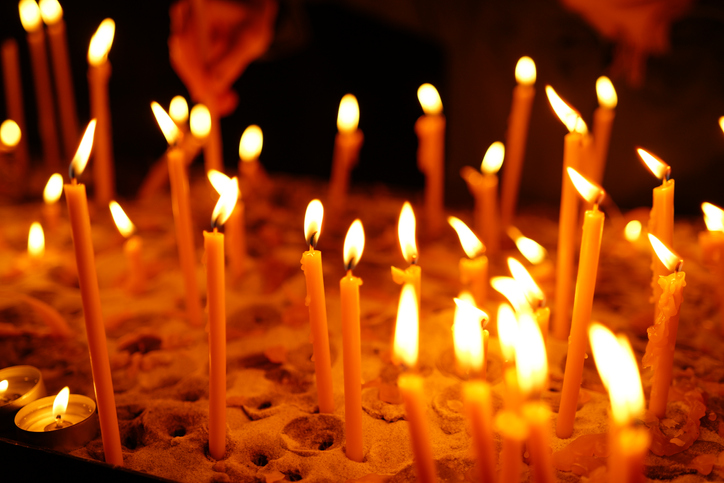
The early-spring custom of relying on rodents to tell us the weather originated with the Celtic pagan holiday Imbolc, which itself would be coopted by the church to Candlemas. February 2 represents the midway point between winter solstice and spring equinox—a milestone worthy of celebration in the days before gas fireplaces and polar fleece.
Folklore holds that if Candlemas conditions are sunny—ergo, capable of creating shadows—winter will stick around for another month and a half. British and European people composed numerous rhyming proverbs to that effect; for example, “If Candlemas Day be fair and bright, winter will have another fight; if Candlemas Day brings cloud and rain, winter won’t come again.” Originally, any small animal seeing its shadow was sufficient rationale to keep the home fires blazing. Over time, bears took on the role, likely because they’re often the animal most associated with hibernation. Then badgers and hedgehogs were asked to act as old-timey Accuweather.
When Germans immigrated to North America, and Pennsylvania in particular, they brought this little ritual with them, but hedgies were harder to come by. (No PetSmart in 18th century America.) And that’s how the groundhog, plentiful in Pennsylvania, became the new hedgehog.
It wasn’t until February 2, 1887, that the famous mammal’s origin story was codified in the history of Groundhog Day. That’s when members of the Punxsutawney Groundhog Club made the first official expedition to Gobbler’s Knob, just outside of their titular city, to find out what weather lay in store. (For the record, it was “more winter,” which is by far the most frequent result of Phil’s shadow test. Of 123 recorded predictions, only 19 of them have ever indicated an imminent spring.)
Very few of the event’s early traditions have survived—probably for the best, as the club members’ activities included feasting on marinated groundhog and imbibing a homemade “groundhog punch” featuring vodka. (A lot of vodka, one assumes.)
RELATED: 13 Odd Predictions About the Future That People in Past Decades Got Wrong—And Right
Ain’t No Party Like a Groundhog Party

The Groundhog Club members—whose duties include planning and prepping for the annual festivities, as well as the workaday care and feeding of Phil—are called the Inner Circle. Their dapper costume of top hat and tails is one of the few remaining aspects of yesteryear’s groundhog hoopla.
Perhaps the biggest change between the late 19th Century and the early 21st is how the holiday has expanded, effectively putting Punxsutawney, population 6,000, on the map. Nowadays, several auxiliary events make Groundhog Day an elaborate, multi-day affair: a club members’ reception, an annual banquet, a formal ball, and even a “Gobbler’s Knob Got Talent” competition. (“It’s a no from me, hawg.”)
Of course, reporters and Phil fans from across the country converge on the area to see for themselves if the groundhog’s shadow is visible—and Punxsutawney-area businesses are only too happy to provide them with plentiful opportunities to dine, shop for souvenirs, and otherwise patronize this groundhog-centric town.
During the year, Phil lives with wife Phyllis in a specially constructed, climate-controlled burrow at the local library. When it’s his time to shine, however, he’s relocated to an artificial tree stump atop Gobbler’s Knob. Early on the morning of Feb. 2, members of the Inner Circle rap on Phil’s door and haul him out to do his prognosticating thing. He speaks to the club’s president in “Groundhogese,” and the president translates the prediction for the assembled crowd.
So, Just How Accurate Is Phil?
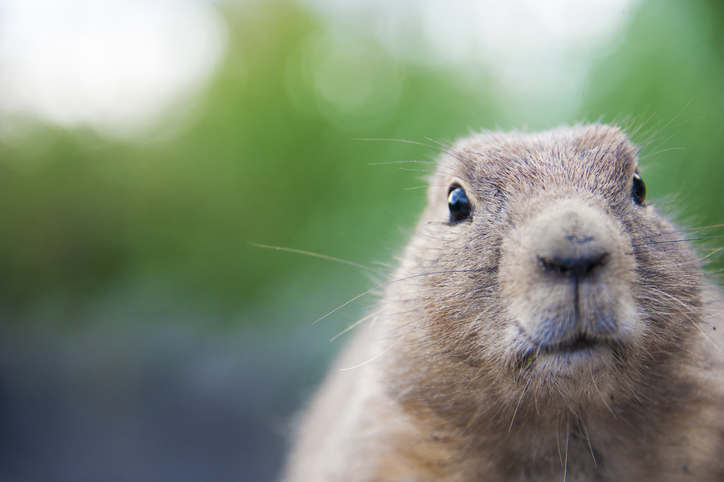
For real, though, are Punxsutawney Phil’s predictions correct? According to the National Oceanic and Atmospheric Administration and others, not so much. He’s only right about 40 percent of the time. So, whether to lay all bets on wearing your winter coat or seeding a new lawn might still be up in the air on Feb. 3.
If it’s accuracy you want, turn to Staten Island Chuck, the urban version of P-Phil, who boasts an impressive record of correctly predicting the next 6 weeks’ worth of temps 82 percent of the time.
RELATED: The Fascinating History of Garden Gnomes and Why You Should Buy One
4 Fun Facts About Groundhogs
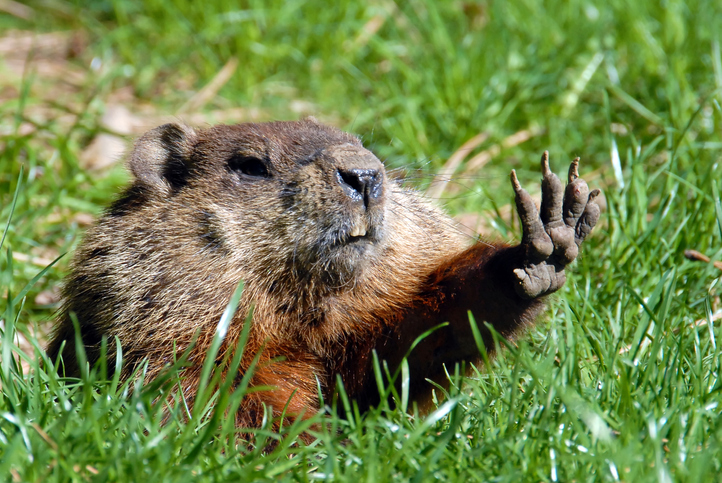
Now that you’re well-read on the history of this holiday, let’s learn some fun facts about ‘hogs.
- Groundhogs have summer homes—and bathrooms! When constructing their burrows, these diggers designate one part of the dwelling to be deeper and cozier, while other areas allow for easy access to the aboveground world when temperatures are warmer. They even create a separate space designated as a bathroom.
- During hibernation—between late October and early February (or the middle of March, depending on the whole shadow-seeing thing)—a groundhog’s body temperature drops from 99 to 37 degrees Fahrenheit; their heart rate plummets from 80 to a mere 5 beats per minute.
- Groundhogs kiss each other! When two woodchucks meet up, they touch snouts in greeting.
- Come summer and fall you can find groundhogs chowing down—they are herbivores, so their diet is largely fruit, grasses, other vegetation, and tree bark—and snoozing in the sunshine (not unlike teenagers, if you substitute Hot Pockets for tree bark.)
RELATED: How to Get Rid of Groundhogs Effectively and Humanely
4 Fun Facts About the Most Famous Groundhog of All
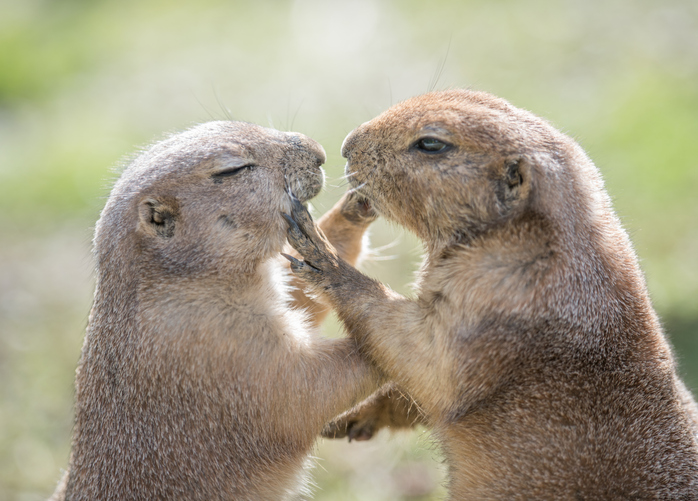
- Formally, the celebrated weather-predicting mammal is known as “Punxsutawney Phil, Seer of Seers, Sage of Sages, Prognosticator of Prognosticators, and Weather Prophet Extraordinaire” even though he’s usually referred to by simply “Punxsutawney Phil.” Previous monikers have included “Br’er Groundhog” and “Punxsutawney Pete.” (His street name is probably “P-Phil”—or maybe “G-Hoggy Hog.”)
- Like the pope, Phil travels in a special plexiglass container.
- Phil is married. His wife’s name is Phyllis. They have no children.
- Although Phil is immortal—he sips from the Elixir of Life during the annual celebration, extending his life for 7 more years—his marmot missus is not. Tell your single female groundhog friends that there may soon be a casting call for The Bachelor: Woodchuck Edition.
